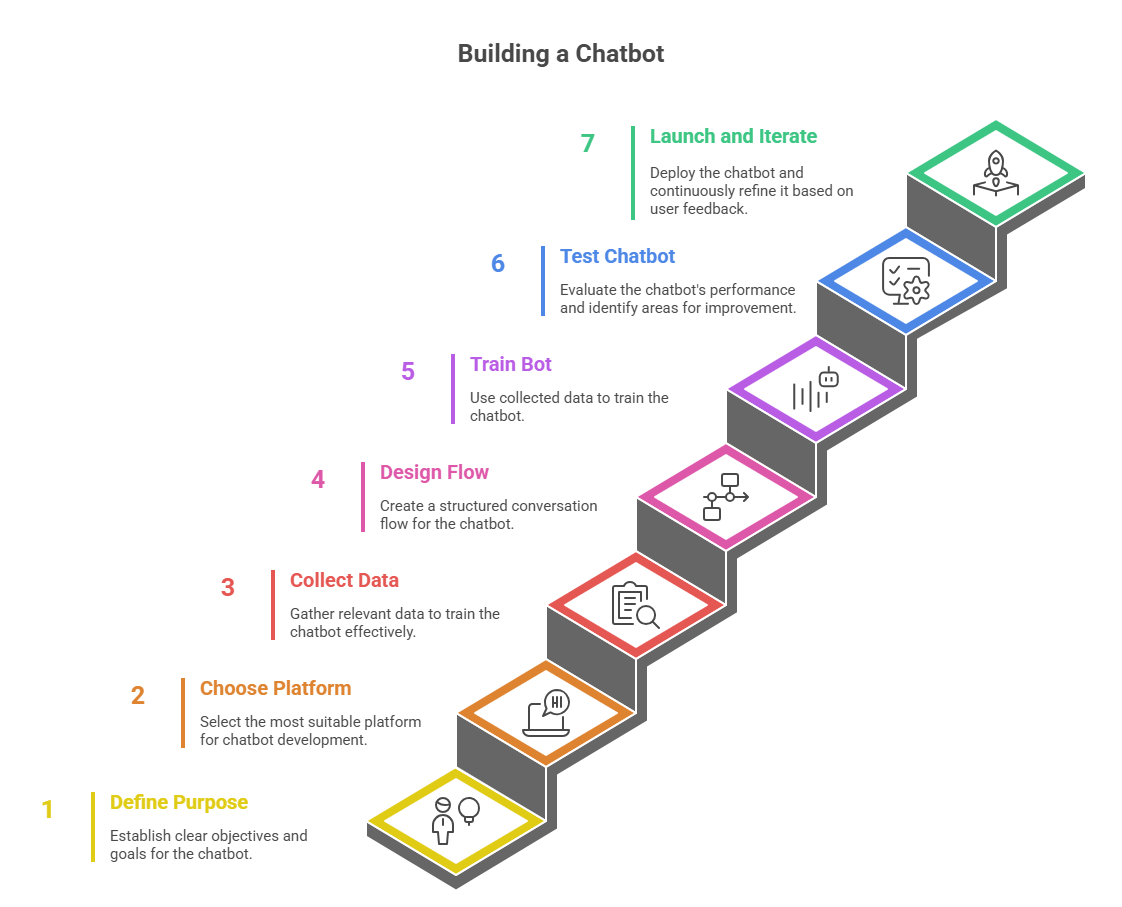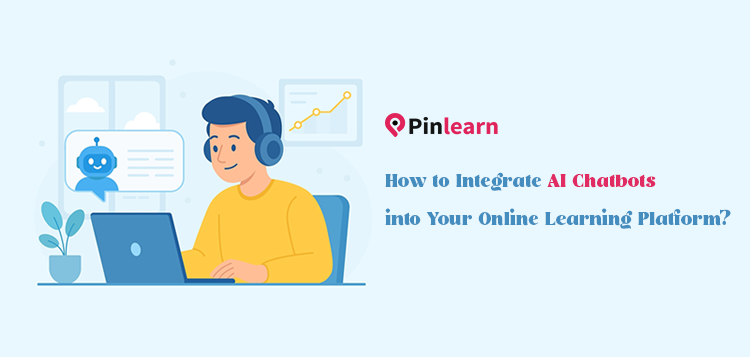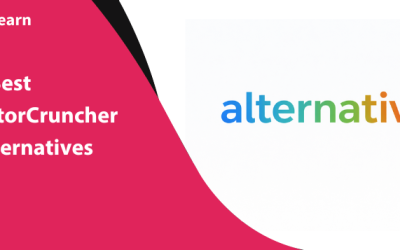Integrate AI Chatbots into E-Learning: A Complete Guide
AI is bringing a monumental shift in e-learning, from the way content is delivered to learner engagement. Thus, higher institutes are embracing real-time feedback and personalized learning journey.
From interactive quizzes to virtual assistants, AI-powered learning has made a giant leap! It’s no longer a buzzword or near-future reality. Duolingo, Paradiso and Preply are adding AI chatbots in their core learning narratives.
In this blog, we’ll explain the benefits of AI chatbots, how to integrate AI chatbots in online learning platforms, and their common use-cases. So, let’s see how AI chatbots can revolutionize your e-learning business!
Why Integrate AI Chatbots into Your Online Learning Platform?
The global chatbot market size stands at $7.76 billion in 2024 and is poised to reach $27.20 billion by 2030. So, you can use an AI chatbot as virtual or even a core teaching assistant.
That said, let’s explore the potential benefits of chatbots in e-learning:
-
24/ 7 Availability
Of course, the key benefit of AI chatbots is their 24×7 availability. In contrast, human assistants are limited by location and time zone. AI Chatbots can answer key questions or resolve complaints instantly, anytime and anywhere!
-
Higher Student Engagement
Whether you admit it or not, learning can turn mundane and boring! AI chatbots offer personalized feedback and learning paths..
-
Administrative Support
From course enrollment to instant support, AI chatbots makes administrative work look like a breeze. Thus, educators can focus on teaching style and class assignments.
-
Instant Feedback and Assessment
In time, chatbots have evolved from rule-based bots to intelligent systems. With NLP, chatbots can provide real-time feedback on conversation inputs. Take the case of Duolingo’s Max. It can help with role-plays and explanations.
-
Easy Communication
AI chatbots are a convenient way to converse with students, parents and teachers. Whether it’s about updating the student’s progress or clearing doubts, they create a collaborative environment.
-
Personalized Learning Experiences
Chatbots can suggest tailored learning paths by adapting to the learner’s style and pace. So, it drastically improves the student learning experience.
Integrating AI Chatbots in Online Learning Platform: Complete Roadmap

Step # 1: Define Your Goals and Purpose
First off, define goals, objectives and bottlenecks in your e-learning platforms. This helps to look for suitable features for your e-learning platform.
Are you looking for real-time feedback from conversational chatbot? Or a virtual assistant to ease your administrative tasks?
Setting clear goals early helps you find the right chatbot that aligns with your platform’s needs. Further, you can even plan the range of tasks and interactions it can handle.
Step # 2: Choose the Right Platform
Once you know your business needs, choosing the right chatbot becomes easier. There are several AI chatbots in the market. You might need to do some research here. FInd the different chatbots that align with your business needs.
Given that, look for these features in your chatbot:
- Omnichannel Support
- 24/7 Availability
- Natural Language Processing
- Seamless Integration
- Personalization
- Multi-lingual Support
Meanwhile, if you desire a more personalized experience, build a chatbot from scratch. However, the downside is the technical know-how of the stack and implementation flow. This involves activities from design to post-launch support.
These are some common chatbots that seamlessly integrates with your learning platform:
- ChatGPT
- Gemini
- Ada
- Replika
- Duolingo Max
- Socratic by Google
Step # 3: Collect Data
To tailor your chatbot’s responses, training them is a crucial part. Data is pivotal for training your model. Collect learner data from attendance, progress, student queries, and grades.
After that, feed this data into your model for training. This will help to identify patterns and trends in student behaviour.
So, what’s the result?
An accurate algorithm that can predict learner behaviour. But, how can you collect data?
You’ll need xAPI to track learner actions.
Given that, let’s list the kind of data to collect:
- What grades and scores do learners get?
- Which are the most exciting and boring parts of the learning module?
- What responses do learners opt for in quizzes?
- Which are the hardest quiz questions?
Step # 4: Design the Conversation Flow
Do you prefer a friendly or a more humorous tone for your chatbot? What kind of interactions do you expect?
That’s what conversation flow is exactly about.
For this, you need to map out various scenarios with triggers, such as keywords. Write scripts based on the expected questions and scenarios. Also, phrase these questions as per the chatbot persona.
Conversation diagrams could help here. For example, use labels like greeting, asking, informing, error, checking, etc. In real-world scenarios, there may be more than one potential answer.
Lastly, consider outliers like handling user errors and mistakes.
Step # 5: Train the Bot
Once you have collected data and worked on your conversation flow, it’s time you build an AI model. Pick a training method from supervised learning and natural language processing.
Subsequently, feed the model with training data collected earlier. Enter valuable patterns and unique intents.
After all, this is where the actual learning happens!
AI training models need to constantly evolve from datasets. This ensures that the final model is accurate and efficient when it is launched.
Step # 6: Test the Chatbot
Finally, the basic model is developed. Include the chatbot into your website and start testing. You can involve testers and also actual learners during testing.
Run test cases for different scenarios. Identify potential vulnerabilities and improvements in your chatbot. In addition, user feedback is crucial here. You can share your chatbot with a small set of audience. Let them explore the chatbot and come across the shortfalls.
Find out what worked, what didn’t, and what requires more polish. Further, pull in these insights to fix the bugs and errors in your chatbot. Refine the chatbot and ensure everything is in place for launch.
Step # 7: Rollout and Improve
Finally, it’s time to launch your chatbot and see some actual action! You can even announce the product upgrade on your channels. However, you need to continuously monitor and assess how the chatbot is working in all the scenarios.
Assess the user interactions and gather feedback. Additionally, keep an eye on usage patterns and improve it over time. Measure user satisfaction and performance metrics with fresh data.
Use-Cases for AI Chatbots in Online Learning Platforms
Meanwhile, here are the different scenarios for use of AI chatbots in e-learning:
| Use Case | How to Use |
| AI Tutor/ Virtual Assistant | Learners can ask questions, test students, evaluate assignments |
| Interactive Quiz / Assessments | Generate practice questions, quizzes, or flashcards after completing lessons |
| 24/7 Personal Assistance | Answer key questions on course content, teaching method |
| Schedule Reminders and Alerts | Notify students on upcoming exams, seminars, incomplete courses, deadlines, etc. |
| Personalized Learning | Personalized curriculum based on learner’s style and pace |
| Real-time Feedback and Grading | Instant feedback on assignments, quizzes or essays. |
| Multi-lingual Support | Translate conversations, lesson plans, questions, into the learner’s preferred language. |
| Data Collection & Analytics | Gather data on frequently-asked questions, most difficult learning modules, etc. |
⚡Related:
Conclusion
AI chatbots are powerful tools to enrich course content and learning experience. Moreover, they reduce the administrative task with automated grading and real-time feedback.
From personalized learning paths to real-time feedback, they have diverse roles in e-learning. These versatile tools have definitely made learning an interactive, robust, and enjoyable experience. Furthermore, AI chatbots are set to evolve, catalyzed by NLP and generative AI.
So, did AI chatbot exemplify your e-learning platform experience? Do leave a comment below.
FAQ-Related to Integrate AI Chatbots into Your Online Learning Platform
1. How can AI chatbots be used in education?
AI chatbots can be used as virtual or teaching assistants. Also, you can use it for personalized learning or streamlining administrative tasks like course enrollments, assessment grading, reminders, etc. Additionally, few helpful scenarios are 24/7 availability, data collection, and translating lessons to the local language.
2. What are the steps to integrate AI chatbot into my e-learning platform?
To sum up, here’s how to integrate AI chatbots in online learning platform:
- Define your goals and purpose
- Choose the right platform
- Collect data
- Work on the conversational flow
- Train the bot
- Test the chatbot
- Rollout and improve the chatbot
3. Can chatbots be integrated into existing LMS systems?
Yes, you can use APIs and plugins for seamlessly integrating with existing LMS. Thus, learners can interact with learning materials, clear doubts, and even automate admin tasks.
4. What are the common AI chatbots for e-learning?
ChatGPT, Ada, Replika, Socratic (Google), etc., are popular AI chatbots for online learning. Meanwhile, look for the right features that align with your e-learning needs. Personalized learning, 24/7 availability, integration, and multi-lingual support are top features to consider.





